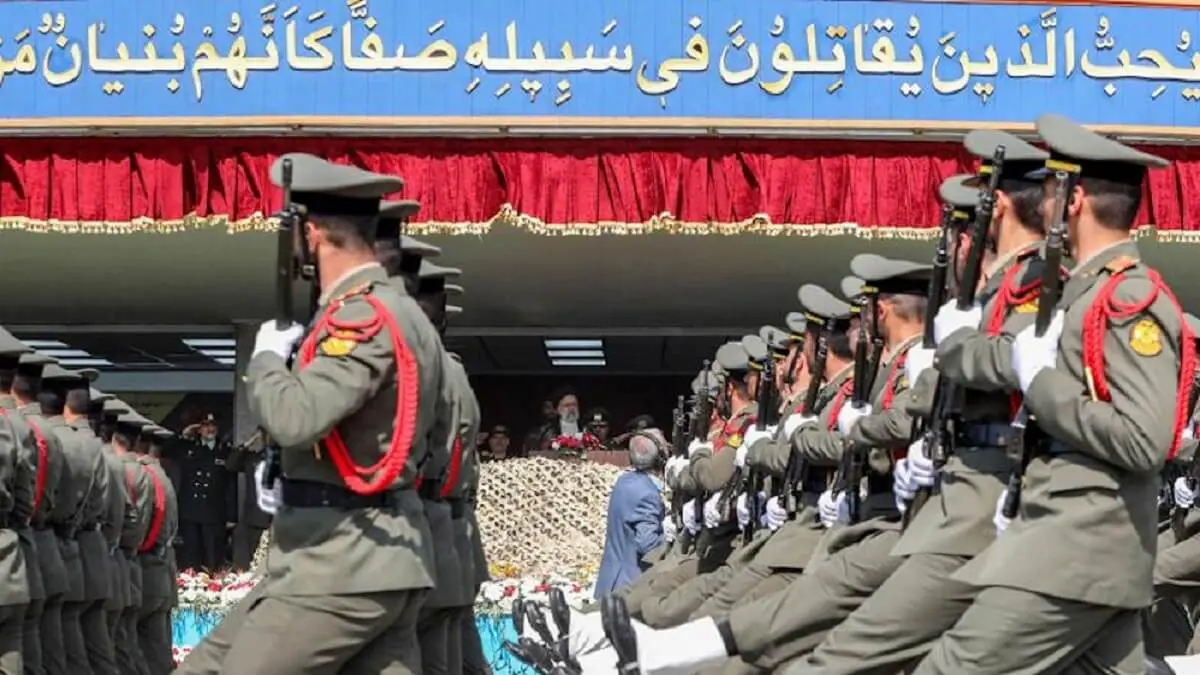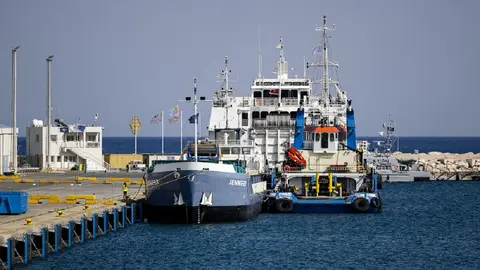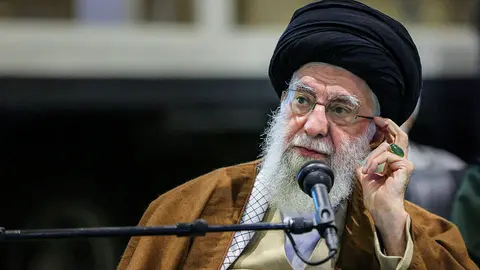The Middle East’s parallel maps

The Israelis escalated their attacks on Iranian and Hezbollah targets in Syria when it became clear that Iran had changed the nature of its presence and armament in Syria.
Palestinians are screaming loudly as they clamour for the spotlight to be put back on the war in Gaza. The bombing of the Iranian consulate in Damascus in early April has revealed the reality of the conflict in the Middle East. It is a showdown between two competing projects in the region, one is Iranian and the other Israeli.
The Palestinians have found out the hard way that they are a small detail in the raging conflict. They realised, perhaps too late, that they have been just a pawn in Iran’s grand chess game. The strike on a small Iranian consulate building in Syria and the killing of a handful of military advisors was enough to trigger Tehran’s retaliation using hundreds of drones and missiles; while the total destruction of the Gaza Strip, the killing and wounding of more than 100,000 Palestinians, and the displacement and siege of two million Gazans, none of this merited an Iranian response. Not even a token Iranian drone was launched towards Israel.
On the eve of the Hamas “Al-Aqsa Flood” operation, Iranian regional expansion had reached its peak. The situation of the Houthis in southern Arabia had stabilised and Saudi Arabia which had convinced itself that coexistence with the Iran-backed Yemeni militias is part of its new reality. Lebanon’s political and financial crisis was not enough to end Hezbollah’s near absolute hold over the country. Iran had a multifold hold over Iraq as it could count on loyal militias operating under the official banner of the Popular Mobilisation Forces (PMF), as well as a political force represented by the Coordination Framework which held the reins of executive power and decided who should serve as prime minister.
Iran held sway also over one of the two main Kurdish political parties and exerted similar influence over key figures in Anbar. The only stubborn resistance to its influence was from the Erbil enclave, which was periodically targeted by drones and missiles, and was constantly pressured by budget constraints and obstacles to the sale of its oil. Pro-Iranian militias spread all across Syria supervised by advisors from the Iranian Revolutionary Guard Corps, with the consent and approval of the Syrian regime, which owes its survival to Iranian (and Russian) backing.
This geopolitical map needed to be stabilised and shielded from the winds of change. It became henceforth imperative for Western leaders and Arab rulers to absorb the notion of two geographical maps in the region: one consisting of the internationally-recognised borders and the other, which should be drawn in a different colour, showing Iran’s area of influence.
The first step towards anchoring the second map was to promote Tehran’s overtures to the region. It was not surprising that the change in Qatar’s attitude towards other Gulf nations was encouraged by Iran as both a prelude and a sounding board testing reactions from the countries of the region. The Arab coalition looked with wariness at both Qatar and Iran, not as the source of threats from two total allies but as pressure factors weaponising different sorts of political Islam for the sake of spreading instability.
As soon as the Al-Ula summit ushered in an era of Gulf détente, the dynamics of rapprochement with Iran gained new momentum. With the exception of Bahrain, Iran enjoys a situation of political calm with the Gulf. It maintains a special relationship with Oman.
The second step was the Gaza war crisis. Neither the West nor Israel was comfortable with Iranian expansionism at the expense of the region, but they both did little to curtail Tehran’s encroachment. In fact, US fighter jets, acted as an air force for the Popular Mobilisation Forces, which were backed by Iranian advisors, in the war against ISIS. The Americans allowed Iranians to control large swathes of Syria. With the exception of the Israeli protest strikes that targeted some bases hosting pro-Iranian militias, Revolutionary Guard advisors and Iranian weapon caches, the situation in Syria did not change very much over the years.
The Israelis upped their attacks on Iranian and Hezbollah targets in Syria when it became clear that Iran had changed the nature of its presence and armament in Syria.
Israel’s pursuit of wing-clipping was no longer sufficient. Targeting was expanded to include the previous diplomatic taboo of attacking embassies and consulates. But what the West, the Israelis and the countries of the region missed is that the Iranian retaliation, regardless of the level of its military failure, opened the door to calls for “de-escalation”, implicitly signalling the acceptance of the current status quo characterised by wide Iranian influence in the region.
Even the United States fell for this strategic trap when it distanced itself from involvement in any Israeli retaliation in response to the Iranian attack, and began itself to call for “de-escalation”. Tehran does not mind the calls for “de-escalation” in its showdown with Israel as long as it continues to exercise its political and ideological hegemony throughout the new Iran-dominated map of the Middle East. This map is now recognised by all sides.
The relative calm in Gulf reactions to the Gaza war, with the exception of Qatar’s work in progress through Al Jazeera, illustrates to a great extent an early understanding of what lay next in the conflict, that is, an Iranian-Israeli confrontation.
Qatar was enthusiastic about its role as mediator, thus demonstrating that it had hosted the Hamas leadership in Doha and financed the militant group’s rule in Gaza, in order to be able to influence it when needed. But now it has realised that the one who controls Hamas is Iran. When Qatar signals that it wants to evade its role in the Gaza talks, it is motivated by US pressures and Israeli criticism of its role as a current mediator or a constant instigator through media influence and public and covert financing of the Hamas project. The game of hosting the Taliban leaders and providing a negotiation hub for the Afghan militants and the US cannot be re-enacted in the Palestinian case. There are too many players, and each of them is ready to spoil the game.
This has ushered in a new phase in the crisis. Phone calls between the leaders of the region, especially the leaders of the UAE, Qatar and Saudi Arabia, along with high-level visits by senior US national security advisors to the Gulf states, show that the region has entered a stage for which it still needs to prepare. With the exception of Qatar, which has bought itself an insurance policy in dealing with the Palestinians through its propaganda ploys, the other countries face criticism no matter what they do. Nothing deterred Israel’s rush for revenge, not even the United States nor the Jewish state’s reputational stigma, which has marred all things Israeli around the world.
This is a country that has insisted on presenting itself as an humanitarian force, which has had its share of suffering, but is now behaving with the utmost brutality. Arab countries are to blame because they did not stop the Israeli aggression. They and the Gulf states in particular, must adjust their positions in order to deal with contradictions in what the Palestinians want. Iran is not fighting on behalf of the Palestinians, but today it enjoys being perceived as a hero. The presence of the head of the Mossad in Doha to hold talks with Hamas leaders via the Qataris is now tolerable. But normalisation between any country and Israel remains anathema.
Gulf leaders realise that their current position towards Iran amounts to a temporary truce during which Tehran draws its new borders. The Iranians will not hesitate to return to their aggressive behaviour, which they have never abandoned. A case in point is Tehran’s treatment of Jordan as a battleground in its showdown with Israel. Jordan is not allowed to voice any political objection nor to assume its sovereign right to prevent drones and missiles from crossing its airspace. It is instead accused by the Iranians and Palestinians of helping protect Israel. Were it not for the intensive US presence over the skies of Iraq, Syria and Jordan, the PMF and other Iranian militias would have had a different say by doling out retaliation against Jordan.
Iran has drawn the contours of its map of influence and acted according to its interests in a way that guarantees its regional position beyond the Gaza war as it abandoned the Palestinians to their fate facing Israeli retaliation alone. The Gulf states have today the right to re-examine their security away from the terms of the Gaza war, and to draw a map that guarantees their interests. The horror scenes in Gaza are catastrophic. The humanitarian aid, whether fully appreciated by Palestinians or not, is necessary. But for Iran, the Gaza war is a marginal spectacle. The war over maps in the region is Tehran’s first concern. In this war, Gulf countries have no choice but vigilance.



